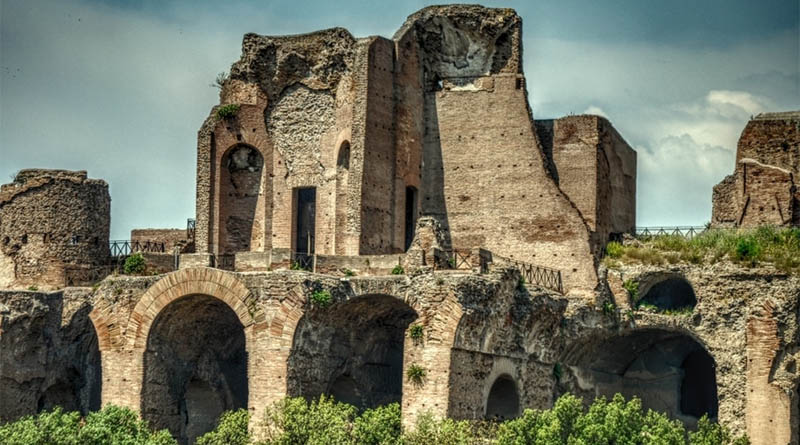WHEN HISTORY DOESN’T MAKE SENSE
Robert John Langdon is the author of ‘13 Things That Don’t Make Sense In The Ancient World‘ and here he takes a look at Roman Ports which are miles from the coast when sea level is apparently rising …
When we look at old maps of Roman settlements and ports around Britain and the Mediterranean, we see that a majority are built on the coastline or waterways of these countries. This fact is not surprising as these locations would need constant supply of goods for trading and construction.
However, if we look more closely at these sites, it becomes apparent that some of the locations are far away from the shoreline or rivers that once supplied them. For example, Brading Roman Villa in the Isle of Wight is 1. 5km from the sea and 500m from the nearest river, which is so small that it could hardly take a canoe let alone a Roman supply ship.
Another example is in Turkey in the Roman capital of Asia Minor, Emphesus where Queen Cleopatra sailed from Egypt to the Roman high command to meet Anthony, with a ceremony that is still enacted today for the tourists. Emphesus is a good 8km from the sea, so unless Queen Cleopatra was in need of a long walk, the shoreline has drastically changed since Roman times.
The final and best example is Lewes in East Sussex, which is an incredible 15km from the coast. Moreover, this vast distance from the sea we see today is compounded by the fact that sea levels have risen by 2m over the last two thousand years, showing that the natural distance from these harbours to the coastline was even greater during the past.
The history books will tell you that this is down to either natural or manmade drainage, but why would you wish to allow a thriving harbour to silt up if it was commercially viable?
In all three cases, this silting resulted in the houses or cities being completely abandoned or livelihoods lost, and the towns scaled down as a consequence. However, what is remarkable about all these locations is that they all the harbours were directly fed by rivers emptying into that area.
These locations were built, in a time when the groundwaters were high, and the river flow was sufficient to flood the harbour allowing boats to sail in and out of the location. This rise in groundwater was due to the ‘Post Glacial Flooding’ which occurred directly after the last Ice Age and has been constantly reducing in size affecting rivers all over Europe for the past 12,000 years. This is because the surplus water drains into the sea raising sea levels (that’s why sea levels over the past five years have risen) and cannot be replaced by the small amount of rain water that tops up the groundwater in certain seasons.
The loss of this groundwater has been compounded over the last 1000 years as agriculture and the massive increase in population have demanded we use more of this precious groundwater for drinking and manufacturing processes; hence the loss of rivers and streams in hot summers.
So if the water was lower in ancient times than it is now…why were these ports so far inland? They should in fact be found further out to sea – perhaps even covered with sea water by now.
 ABOUT THE AUTHOR
ABOUT THE AUTHOR
Robert John Langdon is a writer, historian and social philosopher who has worked as an analyst for the government and some of the largest corporations and education institutes in Britain including British Telecommunications, Cable and Wireless, British Gas and University of London.
www.the-stonehenge-enigma.info

